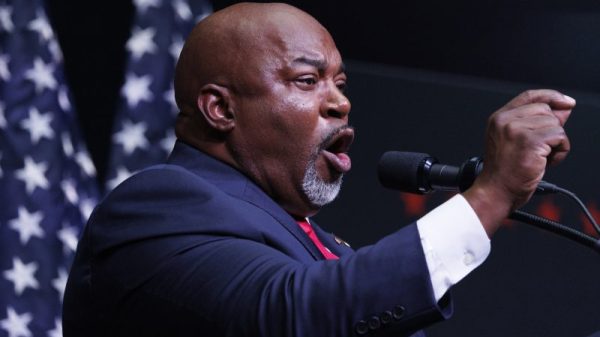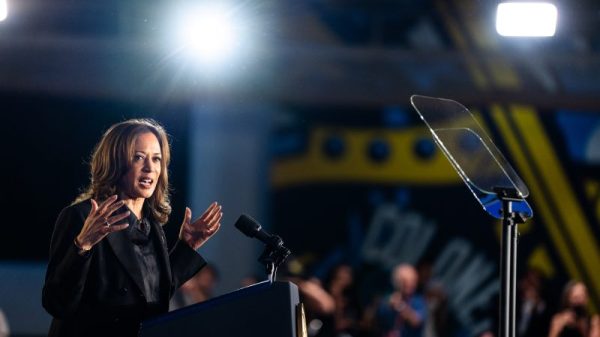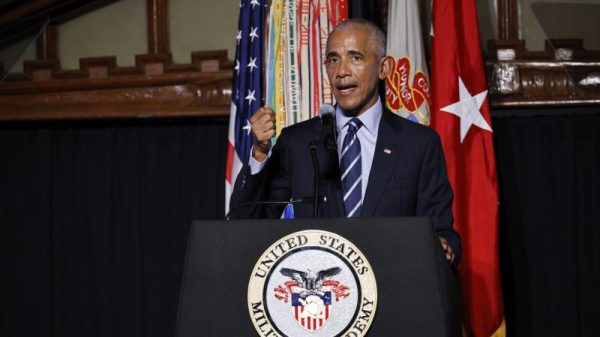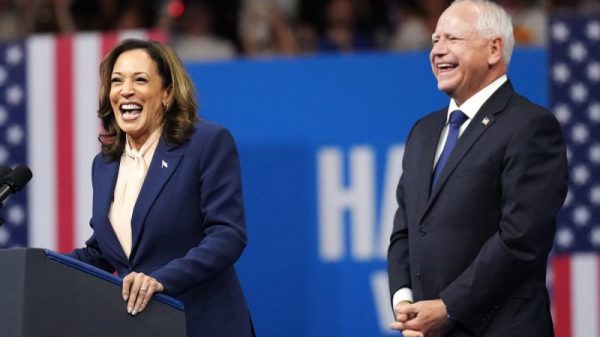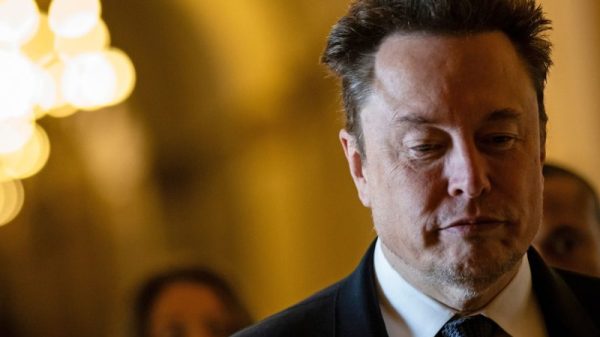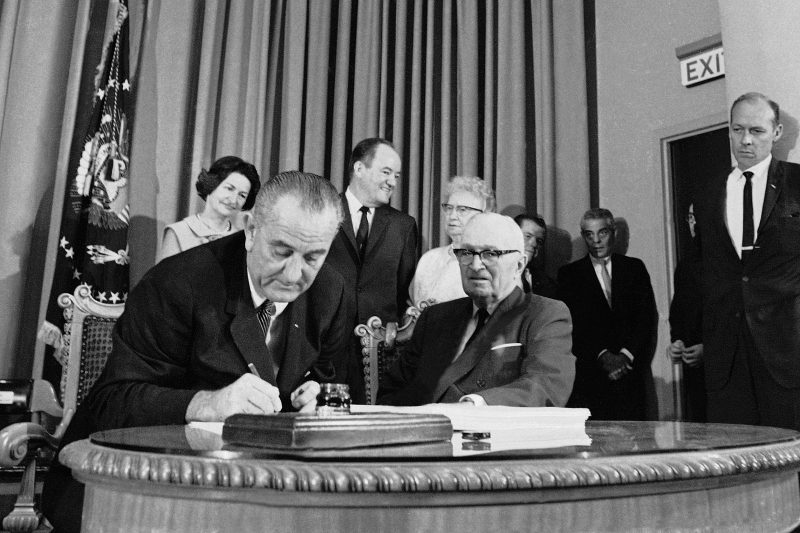“The last administration alone — the last guy who served in this office for four years — increased the total national debt by 40 percent in just four years.”
— President Biden, remarks on the national debt ceiling in Valhalla, N.Y., May 10
As he heads to a showdown with House Republicans over raising the debt limit, the president has sought to add context to the discussion over the nation’s $31 trillion in debt. He has noted that debt has accumulated over the past 200 years. And while Republicans peg Biden as being a big spender, he has pointed the finger at his predecessor, Donald Trump.
Trump, Biden said, increased the national debt by 40 percent in his four-year term. He added that, besides the pandemic, the biggest contributor to the national debt “over the last decade” was the tax cut passed in 2017 and signed into law by Trump. The implication is that if Republicans are looking for someone to blame for the size of the national debt, it should be Trump.
Biden has a point about the increase in debt under Trump.
Understanding the debt ceiling
1/4
End of carousel
Using the Treasury Department’s “debt to the penny” website, we can see that the nation’s total public debt, including intragovernmental holdings, was just under $20 trillion when Trump took office in 2017. Four years later, when Trump left, the figure was about $27.8 trillion. That’s an increase of nearly 39 percent. (The debt has increased an additional 13 percent since Biden became president.)
But numbers can be deceiving. The Treasury website also shows that $4.3 trillion in debt — more than half of the $7.9 trillion increase — came in the last 10 months of Trump’s term, as the coronavirus pandemic emerged, and massive government spending was needed to mitigate the economic fallout. Both parties strongly supported such measures; Biden has criticized Trump’s handling of the pandemic but he has not questioned the level of government spending needed to combat it.
It’s in Biden’s political interest to focus on Trump. But his attack is a bit misplaced. Policy choices made long ago are more responsible for the fiscal state of the nation. Assigning a particular president responsibility for a debt increase is rarely productive, because so much depends on factors beyond a president’s control — an economic crisis such as the Great Recession or the pandemic, for example. (The White House declined to comment for the record.)
The main reason the United States has federal deficits, which year after year add to the national debt, is because of “fiscal imbalance.” Simply put, that means the government is not collecting enough money through taxes and fees to pay for public programs and services it has enacted or promised. If actions are not taken to close that gap, the problem gets worse over time.
Which president has contributed the most to the nation’s long-term fiscal imbalance? That would be Lyndon B. Johnson, according to a 2021 study by Charles Blahous, a former economic adviser to George W. Bush and a public trustee for Social Security and Medicare from 2010 through 2015. Through an exhaustive study of Congressional Budget Office and Office of Management and Budget reports, Blahous estimated LBJ’s share of the fiscal imbalance is 29.7 percent. Close behind is Richard M. Nixon, with 29.2 percent.
Johnson enacted Medicare and Medicaid in the mid-1960s, and then Nixon in the early 1970s expanded both programs and also enhanced Social Security so that benefits were indexed to inflation. Social Security and Medicare are now so popular that both Biden and Republicans have pledged not to touch them as they haggle over other types of government spending. But in effect, according to this analysis, almost two-thirds of the nation’s long-term fiscal imbalance is a result of policy choices made more than 50 years ago. Spending on Social Security and Medicare happens automatically, not subject to annual appropriations made by Congress. So lawmakers would have to pass new laws to restrain spending in those programs, which are called “entitlements” because benefits are guaranteed for all who qualify.
The cost of some of these decisions in the 1960s only became apparent much later.
Former LBJ White House aide Joseph A. Califano Jr. in 1993 disclosed that a seemingly minor provision to provide nursing-home coverage that was added to ensure passage of Medicaid, the health-care program for the poor, unexpectedly led to a gusher of cash from the federal government that helped build what is now a $150-billion nursing-home industry; one-third of Medicaid personal-health spending goes to nursing homes. To pry Medicare out of a Senate committee, Johnson also agreed to pay hospitals a certain percentage above hospital-determined costs and accept doctor fees that were considered “reasonable,” “customary” and “prevailing”— a compromise that at the time he was told would cost just $500 million. Since then, lawmakers have struggled with the spiraling consequences of giving “hospitals and doctors the keys to the federal Treasury,” as Califano put it.
Of course, you can’t evaluate the effectiveness of policies just by looking at costs. Social Security and Medicare helped mitigate poverty among the elderly. Indexing Social Security benefits to inflation gave the program a feature that virtually no annuity can match — and has ensured the elderly do not suffer economically during periods of high inflation.
Social programs, in fact, can provide more benefits than costs in the long run, but it’s not easy to document because the returns may take decades to materialize. A 2020 analysis by Nathaniel Hendren and Ben Sprung-Keyser of Harvard University of 133 policy changes found that spending on low-income children’s health and education in particular paid for themselves. That’s because children who benefited from those programs earned more money as adults, thus paying higher taxes and requiring fewer welfare payments. Children’s health programs, for instance, were estimated to earn the government $1.78 for every dollar spent. Spending on adults did not have the same kind of long-term impact, the analysis found.
Biden, in his remarks, said: “Over the last decade, the single largest contribution to the debt, aside from the pandemic, were the Trump tax cuts — skewed to the wealthy and large corporations — for $2 trillion.”
This is misleading for two reasons.
First, Trump’s tax cut, enacted in 2017, has not yet reduced revenue by $2 trillion; Biden is using an estimate for the period between 2018 and 2028. In reality, the CBO estimated the tax cut would reduce revenue by nearly $1.5 trillion through 2023, after accounting for positive macroeconomic feedback (which reduces the deficit) and additional debt service costs (which increases it).
Second, note that Biden referred to legislation passed “in the last decade.” That means he’s starting with 2013 — which conveniently leaves out a Barack Obama tax cut — the American Taxpayer Relief Act of 2012. (It’s a close call as to whether it belongs in 2012 or 2013. Despite the name, the Senate and House approved the bill on Jan. 1, 2013, and Obama signed it a day later.)
The revenue loss of Obama’s tax cut amounted to 1.8 percent of the gross domestic product, meaning it was double the size of Trump’s 2017 tax cut, according to the Committee for a Responsible Federal Budget — even though Trump often falsely brags he passed the biggest tax cut in U.S. history.
If you count Obama’s tax cut (plus another one he signed in 2010), it added almost $2.2 trillion to the deficit between 2013 and 2023, compared with $1.35 trillion for the Trump tax cut and $3.7 trillion for pandemic spending, according to an analysis of historical budget data. (These numbers do not include debt service costs.)
Why don’t you hear much about these Obama tax cuts? Democrats don’t tout them, in part because they extended about 80 percent of tax cuts first passed by George W. Bush in 2001 and 2003. Bush included a ticking time bomb — the tax cuts expired after nine years, forcing Obama to either extend them or allow taxes to go up for many Americans. He reached a deal that just raised taxes on people making more than $400,000. So Democrats often argue that those tax cuts, including what Obama extended, should be counted as GOP contributions to the deficit.
Trump included a similar ticking time bomb in his tax cut for whoever is president in 2025, as that’s when his tax cuts will expire. Biden has also engaged in these budget tricks for some of his spending programs, having them expire after a few years to make the fiscal consequences seem lower in the long run.
But Obama’s 2012 tax cut had important long-term fiscal implications. He lifted the ceiling on the alternative minimum tax and indexed it for inflation. That saved Congress from having to address the issue year after year, but it also permanently drained those revenue. (Trump raised the ceiling further.)
Blahous said that Congress fiddles so often with the tax code that the effects of one particular tax cut are difficult to discern over a 50-year period. In doing his research, he said he was struck by the fact that policy choices made by Trump will have a greater long-term fiscal impact than his tax cut. Trump eliminated several streams of revenue that Obama enacted to help finance the Affordable Care Act, including a 40-percent tax on high-cost, employer-sponsored “Cadillac” health plans and fines imposed on people who failed to obtain health insurance. Blahous estimated that revoking these taxes will amount to 7.6 percent of the future fiscal imbalance. “One would never know that just following the political debates,” he said.
Looking strictly at legislation that affected the 2021 budget deficit, Blahous attributes 38.2 percent of the deficit to policy choices made by Trump, 36.9 percent to Biden (primarily covid spending), 9.6 percent to Nixon, 8.6 to Obama, 3 percent to Johnson and 2.9 percent to George W. Bush.
Democrats prefer to frame the debate by just looking at the impact of policy since 2000. The last budget surplus was achieved in the 2001 fiscal year, which included the final four months of Clinton’s presidency. In 2000, U.S. debt held by the public was about 34 percent of GDP. As 2023 started, the amount of debt was 97 percent — an astonishing leap.
Under this analysis, which assumes Obama’s tax cuts should be counted as extensions of Bush’s tax cuts, roughly two-thirds of rise in the debt-to-GDP ratio can be attributed to three policies: the Bush tax cuts and the extensions (37 percent); the wars in Iraq and Afghanistan launched by Bush and sustained by his successors (18 percent); and the Trump tax cuts (10 percent). Pandemic emergency spending passed in 2020 accounts for 23 percent of the increase.
But this analysis sidesteps the fact that Obama signed into law two major tax cuts that contributed significantly to the nation’s long-term fiscal imbalance. The Obama White House celebrated the bill as reducing the federal deficit, and Obama was not reluctant to sign it. “This agreement will also grow the economy and shrink our deficits in a balanced way — by investing in our middle class, and by asking the wealthy to pay a little more,” Obama said in a statement at the time.
“The Great Recession and the covid crisis led to unusually large deficits due to congressional action (and in the Great Recession, losses of revenue due to a recession) right at the transition between terms,” said Eugene Steuerle, a fellow at the Urban Institute, in an email. The nation has experienced “ever higher deficits, which result partly from never having policies in place to pay off past crisis-level deficits (and growth in debt) and partly from the automatic growth in spending rather than just legislative increases.” Both parties, he said, have a “joint but growing responsibility for kicking the compounding entitlement shortfall down the road.”
(About our rating scale)
Send us facts to check by filling out this form
Sign up for The Fact Checker weekly newsletter
The Fact Checker is a verified signatory to the International Fact-Checking Network code of principles


